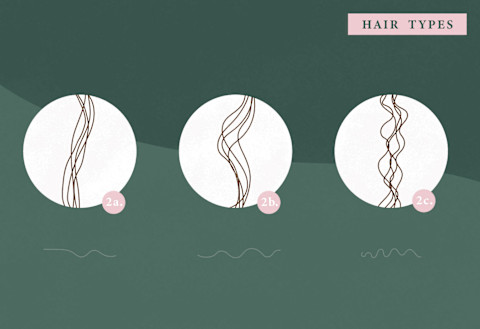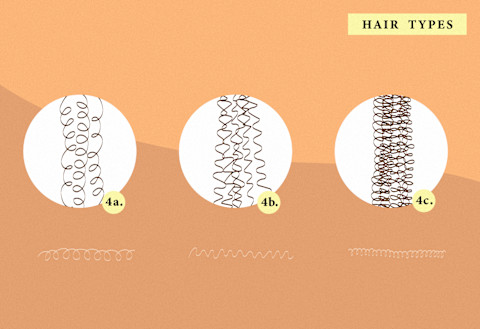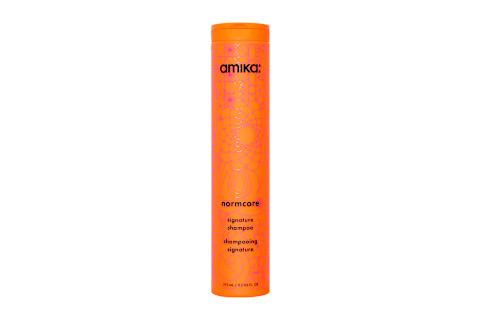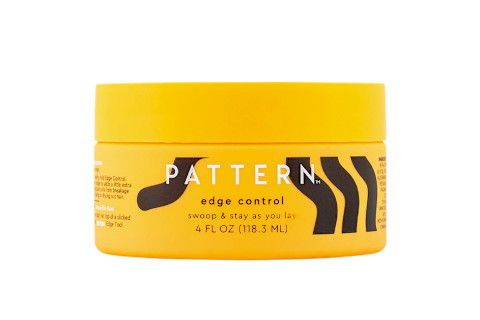
Examining your personal set of tresses—from straight strands to kinky coils—isn't just a fun fact to have in your back pocket or a defining feature to gab about with your hairstylist. It's actually crucial for starting a hair care routine.
In fact, it's often been said that knowing your hair type is essential to finding the best products for you in a vast market of hair care. To find out your specific hair type and what care tips to follow, keep reading.
The ultimate hair type quiz
Why hair type matters
It's a similar venture to knowing your true skin type—those with oily, acne-prone skin might reach for water creams and purifying actives, while those with chronically dry skin fare best with thick, buttery confections topped with an oil.
The same goes for tending to your hair: A curly girl with type 4b strands wouldn't opt for the exact same styler as someone who sports 2c waves. We digress.
Of course, you can have a hybrid of multiple textures (in fact, most people do!), so figuring out your true hair type isn't so cut and dried.
It may take some personal guesswork to figure out what methods work for your specific locks, but identifying your general strand pattern—say, through a hair-type quiz—is step one on the journey.
We should also note that this quiz doesn't take density, porosity, and strand thickness into account—while those do tend to associate with certain hair types, it's not the be-all and end-all.
For instance, anyone can have coarse or fine strands, regardless of whether their hair dries coiled or stick-straight. For the purposes of this quiz, we're sticking to tried-and-true hair types, but we'll touch on porosity after.
Understanding your hair type
We've covered most of the hair types on mindbodygreen before, but below we'll provide some general information for each one along with links to our full user-friendly guides.
Type 1 (a, b & c)
Type 1 hair
You'll notice that the other hair types (2, 3, and 4) have a range of more specific types within them, labeled a, b, and c. However, type 1 hair is different—straight is straight. So if you find your hair dries with a slight wave, you're probably a true type 2a.
The cardinal rules for tending straight hair are as follows: Don't use super-heavy products, shampoo regularly (as you're more prone to oily roots), and remember that volumizing products are going to be your best friend. You may even consider a clarifying shampoo.
Type 1 hair products
Type 2a

Type 2a hair falls right in between straight and wavy. As Meerika Khanna, an Ayurvedic hair wellness expert and founder of Rthvi, previously told mbg, "2a hair type is usually flat at the top and slightly wavy at the bottom."
This hair type will struggle with dryness at the ends but may be prone to greasy strands at the root (kind of like combination skin types). In general, stick with every-other-day washes at most to prevent drying out your waves but still keep your scalp clean.
Type 2b
2b looks like relaxed waves and often has a very defined S-wave shape—even without the need for styling. While the roots are fairly straight, if you have 2B hair, you'll find that your wave pattern makes an appearance starting at the mid-length and continues through to the ends.
Unlike type 1 and 2a hair, those with type 2b strands should probably skip the brush detangling method and opt for a wide-toothed comb instead. Try plopping your hair to enhance your wave definition, and prioritize frequent trims to avoid extra frizz.
Type 2c
This hair type comes with big waves, but they never quite form into an S curl—at least not consistently. Even though it's not technically a "curl," it does require similar care to type 3 hair, as it's more dry than types 2a and 2b.
Because the hair is in between a wave and curl, styling products like curl creams and gels will be helpful for defining your unique shape. This hair type can also benefit from the diffuser drying method should you want to style your natural wave and add some volume.
Shop type 2 hair products
Type 3 (a, b & c)
Type 3a

Now we're entering the true curly scene. This hair type has a clearly defined curl pattern—except it's more relaxed. It will show an "S" shape, but one that's a bit longer and looser than type 3b and above.
Unlike type 4s, 3a hair doesn't always require manipulation to create a defined curl pattern. And while frizz and dryness are a common concern (which is true of all type 3s), creating definition usually isn't an issue. However, as with all wavy, curly, and kinky-coily hair types, 3a's will usually have to pay attention to moisture retention to prevent frizz and dryness.
Type 3b
3b hair is tighter than 3a, and generally has tons of volume. "Each curl is usually no bigger than a highlighter or a marker, even across different hair textures," stylist Cassandra Olivia previously told mbg. If your curls are larger than a marker, then you probably fall into the 3a category instead.
This hair type needs tons of moisture, so consider swapping out your conditioner for a hydrating hair mask every other wash (or every wash, if needed). 3b curls are highly delicate, so tread lightly when styling.
Type 3c
This hair type is often categorized as a classic corkscrew curl. While strict definitions say that this hair type has a curl circumference of a pencil or straw, this isn't always accurate. It's also common for 3c hair types to have an array of 3a and 3b strands sprinkled in, so don't be surprised by the diversity.
Since you want to preserve your curls but you don't want to wash them daily, try "pineappling" before bed. This simply means that you're putting your hair into a high bun (think a top knot but not so tight).
Shop type 3 hair products
Type 4 (a, b & c)
Type 4a

Type 4a hair is formally defined as being densely packed coily hair. When fluffed out, it can look very full. Type 4a hair tends to have a clear "S" pattern, which creates miniature coils. The hair is referred to as dense, with springy coils.
This hair type is typically more dry than type 3s, which means moisturizing products are the way to go. Don't be afraid to add a leave-in conditioner after every rinse—your hair will thank you for the extra drink.
Type 4b
4b hair looks like miniature curls. Celebrity hairstylist and Imbue Hair brand ambassador Michelle Sultan noted that 4b hair looks like "curl strands in the shape of a zigzag. [It] can be quite fluffy looking; it is less defined than that of 4a hair."
This hair type is particularly fragile, which means dry detangling should be kept to a minimum (if ever). Instead, be patient with your coils and only detangle them gently when your hair has conditioner in it—aka, in the shower before you dry your strands.
Type 4c
4c hair has a spiral texture, but the spiral might look miniature. Folks with this hair type will see a great change in hair length when their natural coils are shining versus when they straighten or blow out their hair.
Considering that your hair comes out of your scalp, don't forget to show it some TLC. Monique Jackson, a stylist at GoodBody Salon, recommended regularly oiling or moisturizing your scalp. "Any oil that you apply to the scalp will travel to the rest of the hair [ensuring] needed moisture throughout the ends. You should be oiling your scalp at least once a day or as necessary...especially while wearing hair in protective styles."
Shop type 4 hair products
What about porosity?
Here's the thing: Hair type is just one factor. Even if you and your neighbor both have 3a hair, your porosity levels will change your routine as well. It may seem like a lot to keep track of, but there's a quick test for this as well, see below:
- You'll want to make sure you're testing on freshly shampooed and dry hair. If your hair or strands have buildup, it will affect the results of the test (as some hair products leave a coating on the strands, which will affect the porosity).
- Fill a clear glass of water. You'll want clear because you want to see what happens to your hair when you drop it in (your next step).
- Drop in the hair and see if it floats or sinks to the bottom. If it floats, you have low-porosity hair. If it sinks to the bottom, you have high. If it's somewhere in the middle you have medium or normal porosity.
For high-porosity hair strands, read this guide. For those that fall into the low-porosity category, see this one.
FAQ
How do I figure out my hair type?
To figure out your hair type, take our quiz here.
Do I have thick or thin hair?
One quick way to tell if you have thick or thin hair is by pulling a small section of hair to the side, like a part. Now look at the roots. If you can see through the hair to your scalp underneath, your hair is on the thinner side. If you can barely see it or not at all, it's most likely thick.
What is a 2c hair type?
Type 2c hair comes with big waves, but they never quite form into an S curl—at least not consistently. Even though it's not technically a "curl," it does require similar care to type 3 hair, as it's more dry than type 2a and 2b.
Because the hair is in between a wave and curl, styling products like curl creams and gels will be helpful for defining your unique shape. This hair type can also benefit from the diffuser drying method should you want to style your natural wave and add some volume.
The takeaway
And there you have it—a quick quiz to help you find your hair type and some helpful information along with it. Do your best to follow hair care tips for your specific hair type, but know it's not the only factor that should guide your shopping and hair habits.
Up for another quiz? Find out your skin type here.












